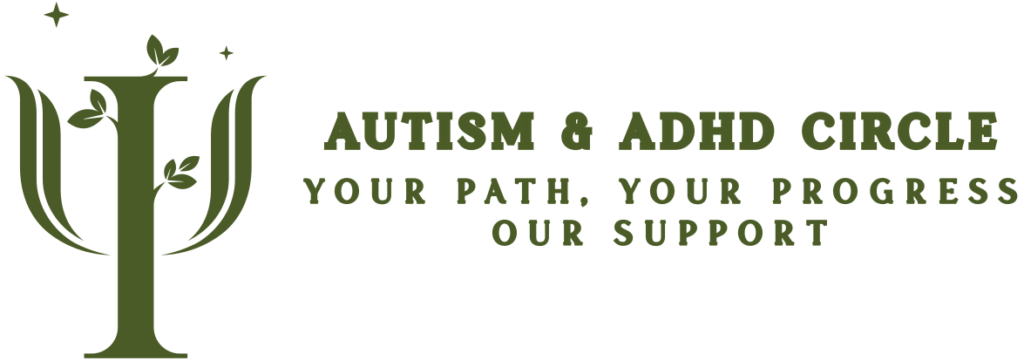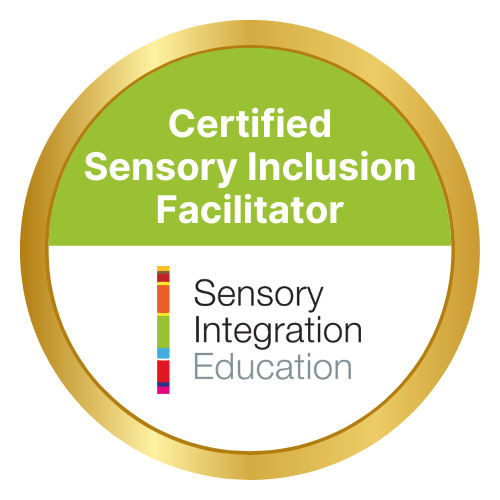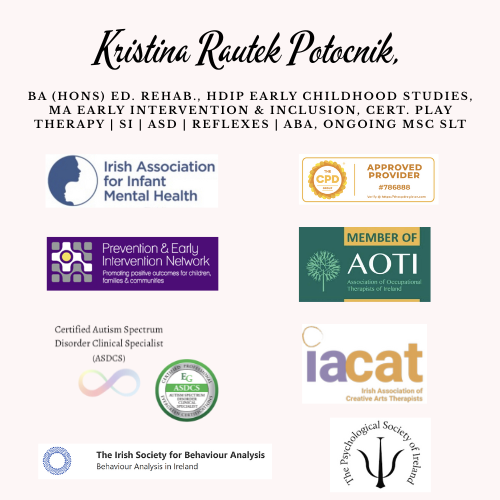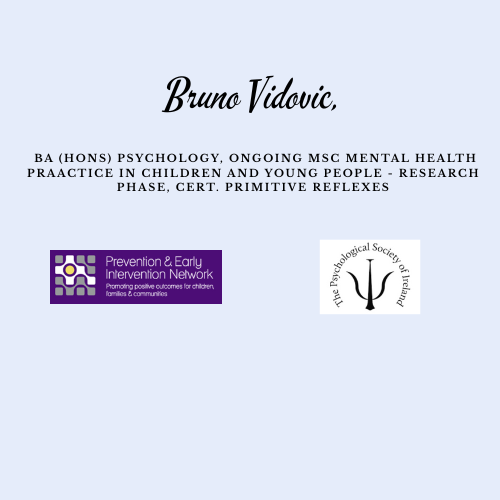Sensory Integration in Babies: Early Development and What to Look For

Author: Kristina Rautek Potocnik, BA (Hons) Ed. Rehab., HDip Early Childhood Studies, MA Early Intervention & Inclusion, Cert. Play Therapy | SI | ASD | Reflexes | ABA, ongoing MSc SLT
Sensory Integration in Babies: Early Development and What to Look For
Did you know that sensory integration starts while the baby is still in the womb? After birth, it continues to grow and helps babies learn how to move, play, and interact with the world. Sensory development is most active from birth to age seven. That is why it is important to observe your baby’s development and notice any early signs of difficulty.
When a baby is born, they already have natural abilities and interests. These are shaped by the environment around them. Research shows that the brain grows and changes the most in the first few years of life. Every time a baby sees something new, feels a texture, or hears a sound, the brain makes tiny connections between nerve cells. These connections help the baby learn. The time before age three is the most important period for learning. Babies need a fun, safe, and interesting space to explore and grow through play.
In the beginning, babies use only their reflexes to connect with the world. They suck, look, and grab without thinking. Soon they repeat actions that feel nice, like sucking their thumb. They begin to use all their senses to understand their surroundings. They look, touch, listen, taste, and move. These senses help babies stay curious. Curiosity helps babies learn to reach, crawl, and move.
At around four to eight months, babies begin to reach for toys or touch things on purpose. If you hide a toy under a blanket, a young baby may not look for it. Later, when the baby understands that things still exist even when they are not visible, they start to search for the toy. This is part of learning about the world. Babies then start to copy sounds and actions from others.
Some babies may show signs of sensory difficulties. A baby might become upset by loud noises, bright lights, or soft touches. This means the brain is having trouble understanding different messages from the senses. Some babies react too strongly. Others do not react much at all. For example, a baby who has trouble with sensory input may cry more when rocked or touched, while a baby without sensory issues may find this calming and fun.
If you think your baby may be struggling with sensory integration, it is helpful to talk to a specialist. A sensory integration therapist will observe your baby during everyday activities like feeding, changing, cuddling, and playing. The therapist will also watch how your baby reacts to lights, sounds, and movement, and how your baby connects with you.
After this first assessment, the therapist will talk with you and help create goals for therapy. Together, you can learn how to support your baby’s development through daily routines. One of the most important parts of this process is helping parents feel confident. The therapist will give advice and show you how everyday actions like touch, play, or movement can support your baby’s growth.
Latest Posts
- How children make sense of the world through their senses
- How your baby learns about the world through their senses
- Helping your child grow stronger through movement and play
- Understanding How Early Intervention Helps Children Learn, Move, and Connect
- How to Recognise Tactile Defensiveness and Help Your Child Feel Safe
- Understanding Feeding Challenges and How to Support Your Child at Home
- Let’s Talk Sitting: Exploring Floor Seating Options
- Retained Primitive Reflexes: The Hidden Cause Behind Developmental Struggles
- Where Curiosity Blossoms: How Children's Play Nurtures Growth for All
- Helping Your Child Through Stress: A Gentle Guide for Parents
- Sweet Little Lies – How to Recognise and Respond with Care
- Chores Are More Than Just Tasks – They’re a Tool for Growing Independence, Focus, and Confidence
- How to Help Children Develop Emotional Intelligence
- Blending Technology and Care: How VR Meta Quest Supports Children at NeuroNest
- A simple guide for parents who want to raise confident, happy children
- Setting Boundaries with Love: A Simple 3-Step Guide for Parents
- Understanding Behavior Through the Nervous System
- A Compassionate Lens on Dysregulation in Non-Speaking Autistic Individuals
- Supporting Development Through Movement: The Role of the Swing in Early Intervention
- Blending Tradition and Innovation: How NeuroNest Supports Your Child’s Unique Journey
- When Movement Meets Innovation: Supporting Child Development with GoBalance
- Why Visual Perception Matters for Everyday Life and Development
- Benefits of Chess in Early Intervention
- Building Healthy Nutrition from the Start
- A Journey Back to Your True Self
- Supporting Your Child’s Hand Skills for Confident Writing
- Blending the Best of Both Worlds
- Helping Toddlers Eat Well: A Parent’s Guide
- Why Tummy Time Matters for Your Baby's Development
- Helping Your Child Build Everyday Independence
- Who Are the Disconnected Kids?
- From First Tries to Automatic Habits: Understanding the Stages of Skill Learning
- Why a Child’s Level of Alertness Matters for Memory and Learning
- Early brain development starts before birth
- Why Slowing Down, Adapting Tasks, and Adding Breaks Helps Children Learn Better
- Why ADHD, Autism, Dyslexia and Other Challenges Need a New Approach
- The surprising power of copying in child development
- Books are more than just language tools—they’re powerful allies in sensory and motor development.
- Rethinking sensory support: moving beyond expensive rooms toward everyday understanding.
- Understanding how fear develops in a child’s brain
- Understanding how an early baby reflex can affect your child’s daily life
- A gentle start into baby development through movement and bonding
- A child-centred, research-informed approach that uses the power of play to support communication, emotional regulation, motor development, and meaningful growth from infancy to twelve years.
Our Partners




Our Memberships


